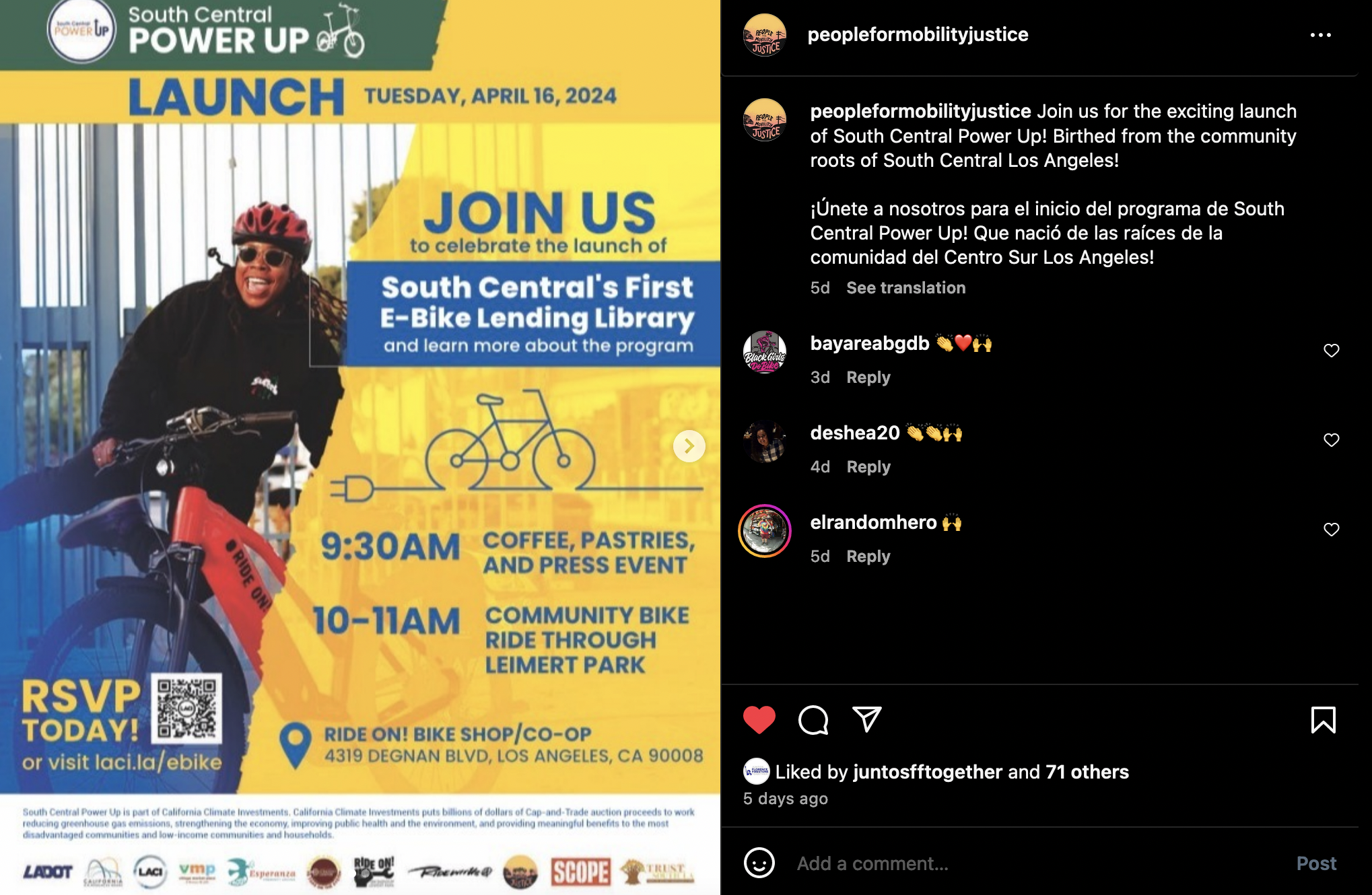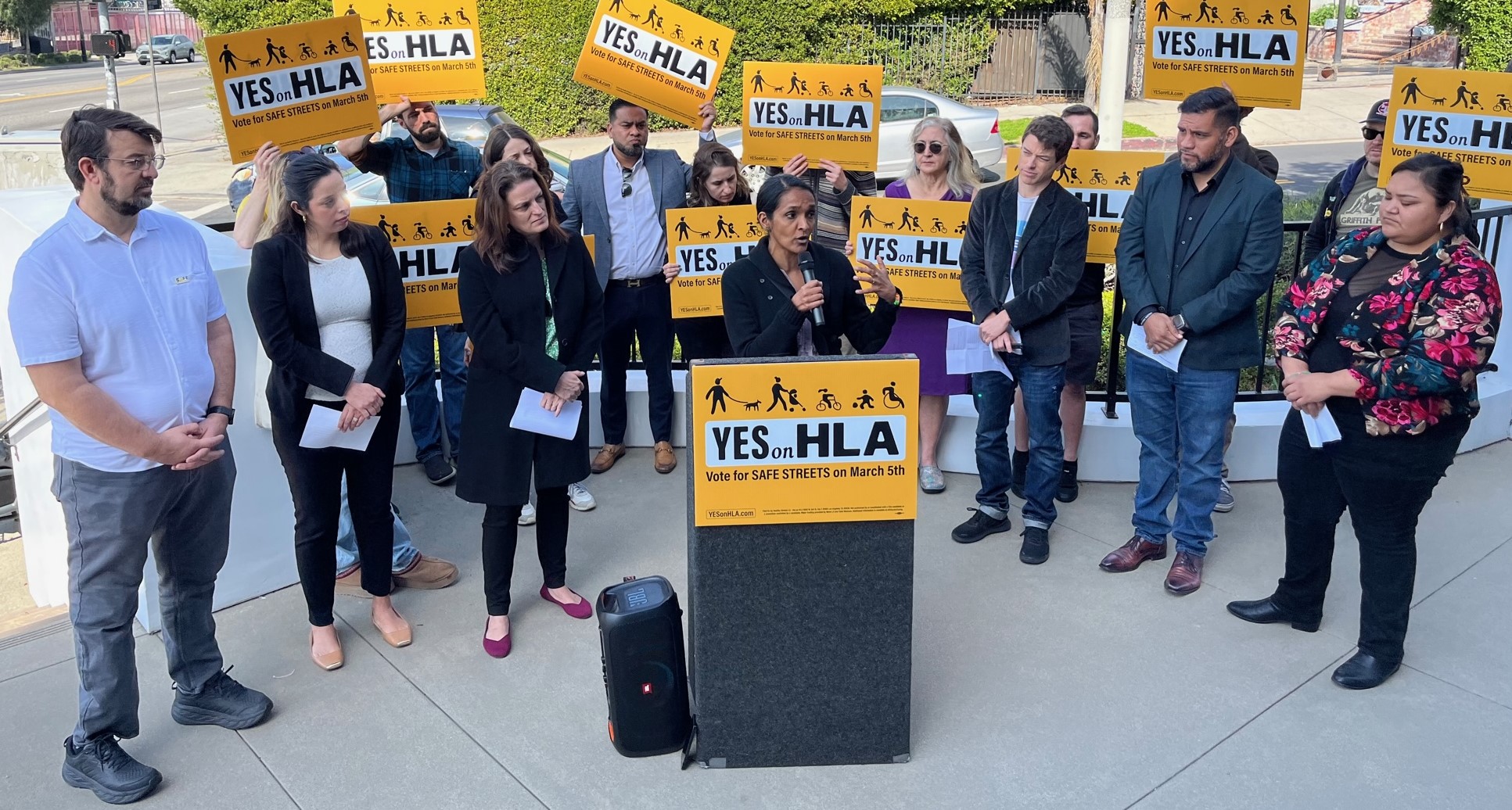Justice-Oriented Mobility Advocates to “Untokenize” Active Transportation Movement at November Convening
2:52 PM PDT on September 20, 2016
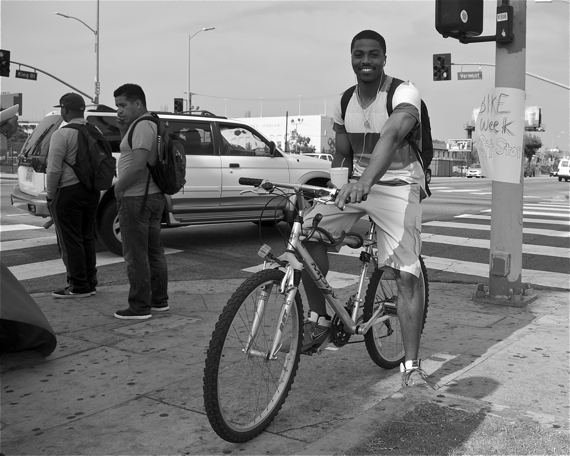
He was so glad I had "talked about people of color committing violence against other people of color," the man gushed, shaking my hand.
My eyebrows shot up.
The focus of my talk at last October’s CalBike's annual summit had been the extent to which the socio-economic and cultural landscapes of a community are inextricably intertwined with the physical one. Using the installation of amenities in a historically disenfranchised lower-income community of color as an example, I had explained how decades of disinvestment, discriminatory planning, suppressive policing, and denial of opportunity had generated chronic insecurity in the public space. And how, as a result, many residents were still unable to access these “improvements.” Our stories about mobility, I concluded, must therefore also engage questions of access, equity, justice, and a wider range of historical and contemporary barriers in order to be truly inclusive.
At no point did I ever offer support for the artificial and highly problematic construct of "black-on-black violence."
And yet, here was this white gentleman in front of me, congratulating me for having done so.
The advocates of color I spoke with afterwards had understood exactly what I was going for. They got the placement of mobility in a community context. And they got the call to think beyond bicycles to the constraints contexts imposed on the actual bodies moving through space on those two wheels. These were frameworks they understood intuitively.
But much like the guy shaking my hand, many of the white advocates in the room had filtered the presentation through their own experiences. And what they had come away with was very different.
A few said they had never considered the idea that certain streets might not be accessible to some people for reasons that had nothing to do with cars. Was this really true? Others seemed to think certain communities were unapproachable. How would one even begin to engage people in such a community? How would you know who to talk to? some asked. It seemed so dangerous to some, but also kind of edgy and exciting to others. Are you giving tours?
I wasn’t sure I could have expected better.
Despite being spot-on-topic at the "Equity in Motion"-themed summit, my presentation had been a major outlier.
The panel had been focused on how to pitch stories about the positive aspects of cycling - the joy, sense of well-being, freedom, and links to community it can bring. But as a reporter whose beat is specifically tied to two transit-dependent and historically disenfranchised lower-income communities of color in Los Angeles, mobility meant something different to me.
And given the theme, I had argued to the panel organizer, it seemed appropriate to explore the extent to which a choice framework both excluded those who cycle out of need - largely lower-income people of color - and rendered important questions of accessibility to the margins.
The organizer and the other panelists were enthusiastic about including an equity perspective. But in the weeks leading up to the event, it was clear that being open to including equity and actually creating the space for that topic to be properly explored are two very different things. And the more I tried to explain my critical approach to the organizer, the longer and more involved my emails became, and the more consternation I felt I was causing.
People don’t like to be told what isn’t working, I was admonished at one point.
But I didn’t see where I had a choice.
I have to speak to current frameworks to be heard. And I have to spend most of my time deconstructing said frameworks just to explain why I should not be dismissed out of hand. And every single time I have to proceed this way - every time I post another 3,000 - 5,000 word story trying to justify the incorporation of marginalized voices and realities, compose yet another lengthy explanatory email, or look around the room where I am speaking - I wonder if this will be the last time I will be invited to opine on this topic.
The More Things Change, the More They Really Don’t
It’s an odd thing to observe that the more popular the topic of equity has become over the last few years, the less genuine space there is to truly address it in a meaningful way.
Despite the fact that most cyclists and people using transit are working-class folks, for example, “Over and over I’ve been asked to participate in conversations that start with, ‘How do we get more low-income people biking and walking?’” says cultural anthropologist and bike justice advocate Adonia Lugo.
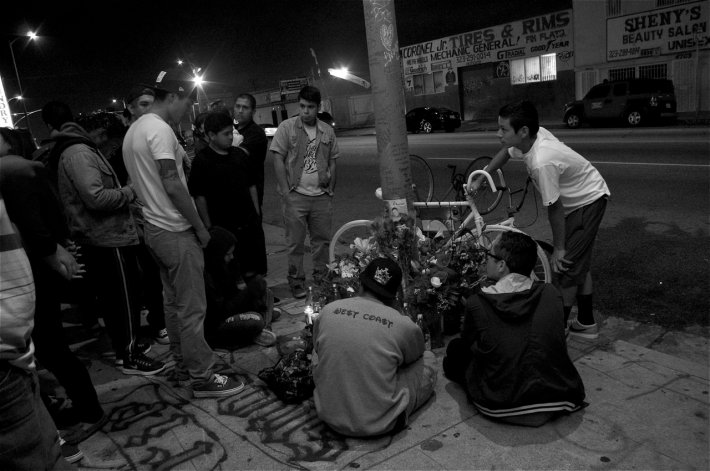
We were chatting about the November launch of The Untokening: A Convening for Just Streets and Communities,* a national gathering on equity in mobility aimed at decentering the white male upper middle-class culture that has stood guard too long at the bridge, determining who shall or shall not pass. [*Full disclosure, I am also involved with organizing the event.]
The genesis of The Untokening was rooted in scenarios just like the one Lugo was describing. The absence of so-called “invisible” cyclists from organized mobility and urbanist circles coupled with non-contextualized data (e.g. public health indicators highlighting obesity in working class neighborhoods) has made it too easy for mainstream advocates to make misguided assumptions about what such communities were or were not doing and why. And no matter how many times Lugo had answered, “They’re [already] biking and walking! They’re the ones! They might not like it. They may think it’s awful. They may live in places where it is terrible [to do either]. But they’re the ones that are doing it!” mainstream advocacy had yet to retool its thinking on that and a host of other subjects.
Frustration at that intransigence fueled Lugo’s sense that working outside the existing system might prove more fruitful.
“Naomi [Doerner] was really the instigator,” says Lugo. She, Doerner (Principal & Equity Strategist at Seneca), Carolyn Sczczepanski (Communications and Marketing Manager for the Minnesota Housing Partnership), and Zahra Alabanza (co-founder of Black Freedom Outfitters and Red, Bike and Green in Atlanta) had already had numerous conversations about how often they, other advocates of color, and even the topic of equity itself were tokenized within walk/bike circles, especially at national and local conferences.
They agreed that the best way forward was to host a convening that would move to the fore the people and perspectives they saw consistently relegated to the margins.
Building on the community fostered via the Bike Equity Network - an online listserv Lugo created centering the experiences and practices of folks working in the mobility justice and equity space - they recruited advisory committee members and began an open dialogue around the form such a gathering might take. When Alabanza was approached to do some local committee work by the organizers of Facing Race, a national conference exploring race and policy scheduled for November in Atlanta, the urgency of addressing the violence against men of color in our streets made it the perfect opportunity to gather mobility advocates to set a new course for what this movement could be.
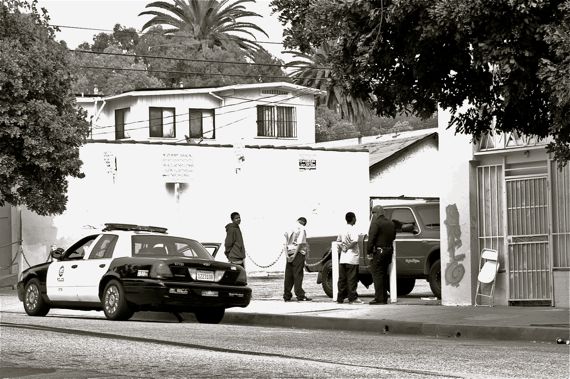
Early on in the planning process, it became clear that the best place to begin was at the beginning. To create a space for the attendees to first share knowledge about the challenges confronting them and their communities and then, drawing from that pooled expertise, establish basic principles around equity and justice in mobility. As such, the goal would not be to create a nonprofit or alternative structure to the mainstream active transportation movement, per se. Rather, the objective is to lay the foundations for a grassroots justice and equity-centered platform co-created by the very people whose lives and work are most acutely impacted at the points where the physical, racial, gender, socio-economic, cultural, and policy landscapes all intersect.
Lugo says she is particularly pleased about the possibility of a national platform defining equity and exploring related elements (gentrification, just streets, community development, etc.) as they tie in to mobility and justice. The environmental justice movement took that approach in 1991, laying out a Preamble and 17 core principles that gave the nascent movement a stronger foundation from which to grow.
“In terms of creating a discourse of bicycle justice that is rooted in environmental justice and transportation justice framework, it makes sense to get a bunch of people together and start drafting...our principles. What are the things that are common in our approach to this work?”
“That’s the thing that’s lacking,” she muses: guiding foundational principles, definitions, frameworks, objectives, and even data that could help shape a larger vision of what equity and justice in mobility mean in theory and practice.
Not that she expects Untokening attendees will arrive at complete unanimity on how to address every issue, she says.
Indeed, the organizers and advisory committee members have spent the last several months debating how to create the space where that kind of open dialogue could happen in the first place.
Establishing an inclusive paradigm, it turns out, requires a deep commitment to overt intentionality.
Just getting a diverse group of folks in a room isn't enough, in other words. It is about working with those folks from the outset to determine what kind of space is needed in the first place and then continuing to both nurture and interrogate this thing you are building together as you go.
Which means that our conference calls have featured lengthy and animated discussions around what might otherwise be mundane topics: Do we call this thing a summit? A gathering? How can we avoid "equity-washing"? Does using justice/just-us language inappropriately co-opt civil rights language? Do we push the boundaries on existing terms or concepts or create new ones altogether? What language and tools do we deploy to ensure the folks that need to be in the room are able to be there? Can we scrap a one-way transfer-of-knowledge approach in favor of collaborative conversations? How do we ensure everyone's contributions are synthesized in the platform produced? How can we support each other in situations where tokenization is the norm? Is this effort sustainable if it is about power-sharing, collaboration, and intersectionality, and not all that funder-friendly? Where do we go from here?
We still don’t have all the answers to these and a host of other questions. And that’s the point - the attendees will be called upon to help determine the way forward.
For this reason, priority will be given to advocates of color, members of the LGBTQX community, and those representing other marginalized identities and communities. Although the organizers want to make clear that everyone is welcome, The Untokening is not conceptualized as an opportunity for mainstream advocates to learn from their justice-oriented counterparts. It is a moment for those justice-oriented advocates, their communities, their needs, and their realities to finally be the starting point of the conversation.
Why Now? Tokenization is Hardly New.
Advocates had formally been pushing for change at the national level from within the bike/walk movement since 2013, says Lugo.
Which is in no way to suggest that people hadn't been pushing the boundaries in active transportation prior to that, of course. But the Equity Initiative at the League of American Bicyclists, launched in 2013, was explicitly intended to institutionalize those efforts within the movement itself by helping the League grapple with what equity meant and to better connect the organization with the diverse communities it served.
But not only did Lugo, the Initiative's first and only Manager, find the League largely unwilling and unready to move in the direction it had asked her to forge, it was clear that it was not going to be ready at any point in the near future, either.
Instead, she said of her departure in 2015, “[I] had to just accept that this organization had taken on this [equity] project without doing a comprehensive and all-hands-on-deck analysis of what it was that they were taking on...and concluded I could not actually get this work done based on the conditions I was experiencing in the organization.”
The Initiative has lain fallow ever since. But the stasis seen in the League is really only symptomatic of a much larger, system-wide problem.
Given the bike policy community’s focus on engineering and street design, Lugo tells me, there is a “huge” professionalized human infrastructure extending well beyond the League that has grown up waging battles with departments of transportation to secure funding for infrastructure-based studies and the redesigning of the public space.
“It is the bread and butter of a lot of people.”
Which is not to say that the prioritization of infrastructure is the wrong approach. But when it overshadows all else, it leaves very little room to explore the links between infrastructure placement and, say, wealth inequalities.
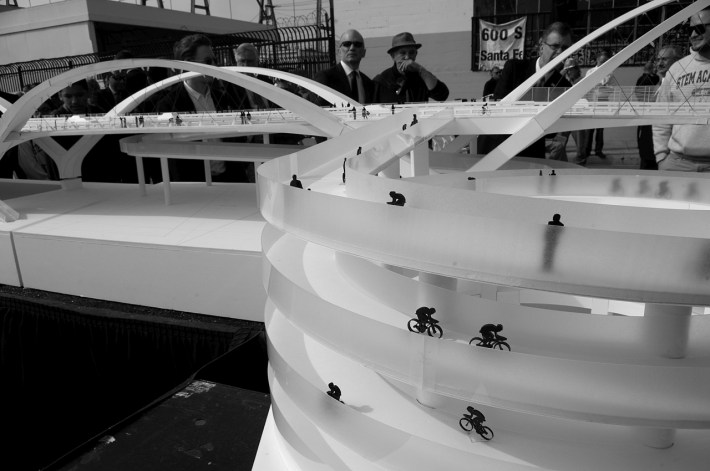
Moreover, in valuing formal knowledge of infrastructure planning and engineering, this approach essentially devalues more contextual knowledge grounded in understandings of how the communities expected to benefit from particular interventions actually function. We see this dynamic enshrined in the way consultants are regularly deployed to redesign spaces in communities they are often wholly unfamiliar with and the exclusion from the process of those with local expertise until well after all of the major decisions have already been made.
These kinds of barriers to critical analysis around infrastructure and the limits on participation in planning they create are deeply problematic. At the very moment that urbanists and livability enthusiasts are sizing up lower-income communities of color like they are the last frontier in urban planning, too few have stopped to ask about the consequences of the policies they champion. And even fewer are grounded enough in particular communities to even know where to begin searching for those answers.
Take, for example, the use of “bicycle gentrification” as a political strategy for promoting bicycling. The decision in the early days of bike advocacy to connect the implementation of bike infrastructure with a boost to property values may have been a utilitarian one in that it gave advocates a way to garner political, financial, and physical support for their movement. But because little thought was given to questions about who would be impacted by such an approach at the time or how, argues Lugo, the end result was the use of mobility planning to serve private interests.
“Who actually has the capital to have a business or own property such that they’re going to benefit from these increases in value?” is one of many questions that should have been raised, she says. “Because if you’re talking about a city like Los Angeles, which is mostly tenants, I’m sorry, but ‘bikes mean business’ for whom?”
“If we’re going to be promoting that [infrastructure-based bicycle-gentrification] strategy,” she continues, “I would say it is only ethical and responsible for us to also be looking at [bigger questions of] economic development - who is getting opportunities to invest and who historically never gets those opportunities.”
But the space to ask those questions is simply not there, she concludes, despite the fact that it was the bike advocacy community that made this connection between public space and private interests in the first place.
And when you couple that lack of space with the limit on the number of times that people wish to be told by a cis white male and able-bodied-dominated community how they, as members of marginalized communities, should think about their own experiences and needs or those of the people they represent, then it is easy to see why now is a good a time as any to untokenize active transportation.
"We Can't Do this Work for You"
Back at the CalBike summit, I had watched the room filled with mostly white advocates leap to their feet to give Tamika Butler, Executive Director of the Los Angeles County Bicycle Coalition, a standing ovation.
It was more than well-deserved. Butler is an exceptionally gifted public speaker and all-around incredible human.
But as I looked around the room, I had wondered how many of the applauding and even teary-eyed advocates had really understood the extent to which her speech had chastised them, the way their organizations operated, and what even the most well-intended among them regularly put people in her position through.
At one point, she had ticked off the number of nonprofit boards she had been asked to join just in the days leading up to the event. She knew just how many boxes organizations could check off when they brought her on as a representation of “diversity,” she said. Black, female, and queer with an ability to put white people at ease even when talking about the touchiest of topics, she was hyper-aware that she was a natural choice for any and every organization looking to learn how to begin to address issues of race and class in planning.
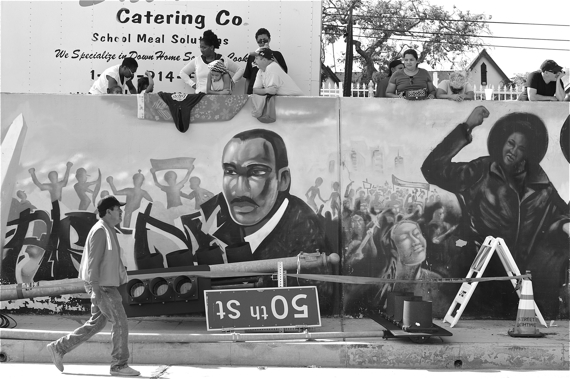
She was also, she said, feeling the limitations of what she could do or say in those spaces. Too often, as the only one in the room speaking to the issues that she did, there was no one equipped to help shift the frameworks she challenged to accommodate her. Which meant she was often misunderstood, or subjected to well-meaning (or not so well-meaning) but offensive critiques and lines of questioning, or told outright she was distracting from the important issues at hand. Allies needed to do more than applaud her for being who she was, she was essentially arguing. They needed to interrogate their own privilege and positioning, check their fragilities at the door, and be more active participants in dismantling barriers to inclusion.
“We can’t do the work for you,” she concluded, gesturing toward the advocates of color who were now adamantly snapping their fingers in approval. “When you leave this conference are you going to do this work or just check that box” saying you met your diversity quotient?
The launch of The Untokening is the recognition that, in the years since diversity and equity have become national topics du jour, that work Butler speaks of has yet to be undertaken in earnest in the larger active transportation community. And while she and other justice-oriented advocates would likely be the first to acknowledge that such a process is neither easy nor particularly comfortable, the fact that so little progress has been made suggests the tokenized will need to lead the way.
Advocates will gather in Atlanta on the 13th of November to begin that process.
- To learn more about The Untokening: A Convening for Just Streets and Communities and to register to the convening, please visit: http://www.untokening.org.
- Scholarships are available for mobility justice leaders in need of financial assistance, particularly those of color.
- If you cannot attend but want to help by sponsoring participants or supporting the effort overall, please consider contributing to the online ioby campaign.
- Follow the movement at @untokening on Twitter for updates. Queries? Reach us here: mobilityequity@gmail.com.
Sahra is Communities Editor for Streetsblog L.A., covering the intersection of mobility with race, class, history, representation, policing, housing, health, culture, community, and access to the public space in Boyle Heights and South Central Los Angeles.
Stay in touch
Sign up for our free newsletter
More from Streetsblog Los Angeles
This Week In Livable Streets
CicLAvia returns to Venice Boulevard, Metro board committees, L.A. City Council Transportation Committee, Metro budget theater, and more
Measure HLA Is Now Officially Law for L.A. City
Check the city maps to find what bus, bike, and walk improvements are coming to streets in your neighborhood

